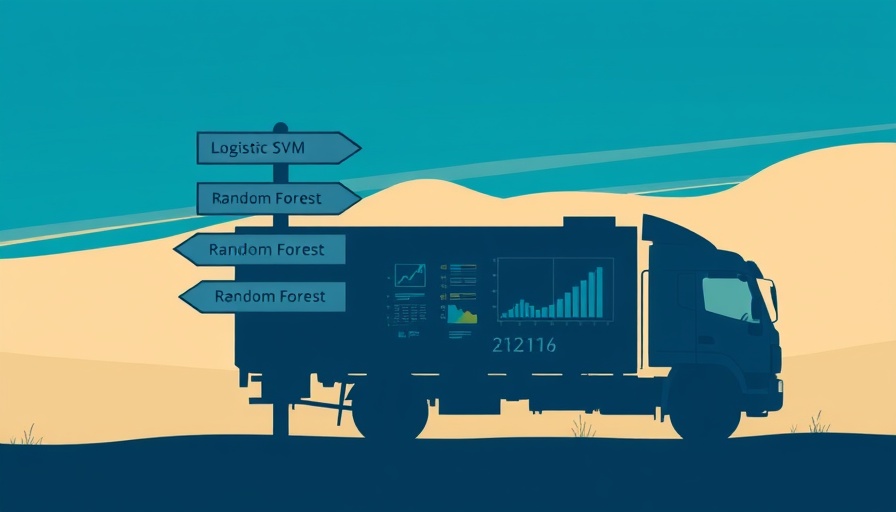
Understanding the Importance of Choosing the Right Model
In the high-stakes world of machine learning, particularly when working with small datasets, selecting the appropriate model is crucial. The landscape is filled with options, but three contenders stand out: logistic regression, support vector machines (SVM), and random forests. Each holds unique strengths that can make a significant impact depending on the nature and size of your data.
Why Do Small Datasets Matter?
Small datasets are a common challenge many professionals encounter, especially in niche markets. Despite the ongoing buzz around “big data,” countless projects operate with limited samples, leading to intricate challenges:
- Overfitting: Models may memorize specific data points instead of learning broader patterns, which significantly impacts predictive power.
- Bias-Variance Tradeoff: Striking the right balance between model complexity and interpretability is essential. A model that is too simple may underfit, while one that is overly complex could lead to overfitting.
- High-dimensional Data: With high-dimensional inputs and fewer samples, it becomes increasingly difficult to differentiate signal from noise.
- Statistical Power: Parameter estimates might be unstable, and slight changes in the data can yield drastically different outcomes.
These factors require professionals to prioritize generalization and robustness over sheer predictive accuracy.
The Case for Logistic Regression
Logistic regression is often the go-to choice for smaller datasets due to its straightforward nature. This linear model assumes a direct correlation between the input features and the outcome. Here are key aspects of logistic regression:
-
Strengths:
- Simplicity and Interpretability: It features few parameters, making it easy to explain to stakeholders.
- Low Data Requirements: It suits datasets where the relationship is approximately linear.
- Regularization Options: Techniques like Lasso and Ridge penalties can be applied to avoid overfitting.
- Probabilistic Outputs: Unlike hard classifications, it provides calibrated probabilities, enhancing decision-making.
-
Limitations:
- Linear Assumption: It struggles with non-linear decision boundaries.
- Limited Flexibility: Its performance plateaus when managing intricate feature interactions.
In scenarios with minimal features and clear separability, logistic regression shines as a reliable option.
Harnessing the Power of Support Vector Machines
Support vector machines operate by identifying the optimal hyperplane that maximizes the margin between diverse classes. By using support vectors, SVMs achieve efficacy even with smaller datasets. Here are notable advantages:
- Effective in High Dimensions: SVMs maintain performance in high-dimensional spaces due to the kernel trick, which allows data transformation into higher dimensions where linear separation is possible.
- Excellent for Non-linearity: By utilizing non-linear kernels, SVMs adeptly handle datasets with complicated relationships.
However, it’s also essential to recognize that their implementation can be more complicated, requiring careful tuning of hyperparameters.
Random Forests: Resilience Through Ensemble Learning
Random forests, known for their robustness, utilize an ensemble of decision trees to enhance predictive accuracy. Specifically advantageous for small datasets due to their ability to mitigate the risk of overfitting:
-
Advantages:
- Handles Complexity: Perfect for capturing intricate datasets with numerous interactions.
- Improved Generalization: By averaging predictions from multiple trees, it minimizes variance.
-
Challenges:
- Less Interpretability: Understanding the model becomes frustrating due to the underlying complexity of multiple trees.
For practitioners faced with complex datasets that may overwhelm simpler models, random forests offer a solution that trades off interpretability for resilience and stability.
Which Model Should You Choose?
The selection among logistic regression, SVM, and random forests ultimately hinges on the specific characteristics of your dataset and your objectives:
- Opt for Logistic Regression: When you require interpretability and operate on minimal features.
- Go for SVM: If your data has clear geometries and you’re dealing with complex patterns.
- Choose Random Forests: For handling diverse datasets with numerous features and interactions.
Ultimately, effective modeling requires clear articulation of objectives and careful evaluation of data characteristics.
Time to Take Action
Data-driven decision-making is more than just picking a model; it involves understanding the underlying data. As you navigate the complex landscape of machine learning, it's vital to experiment with different models while keeping their respective strengths and limitations in mind. Start exploration today, and take your insights to the next level!
 Add Row
Add Row  Add
Add 




Write A Comment